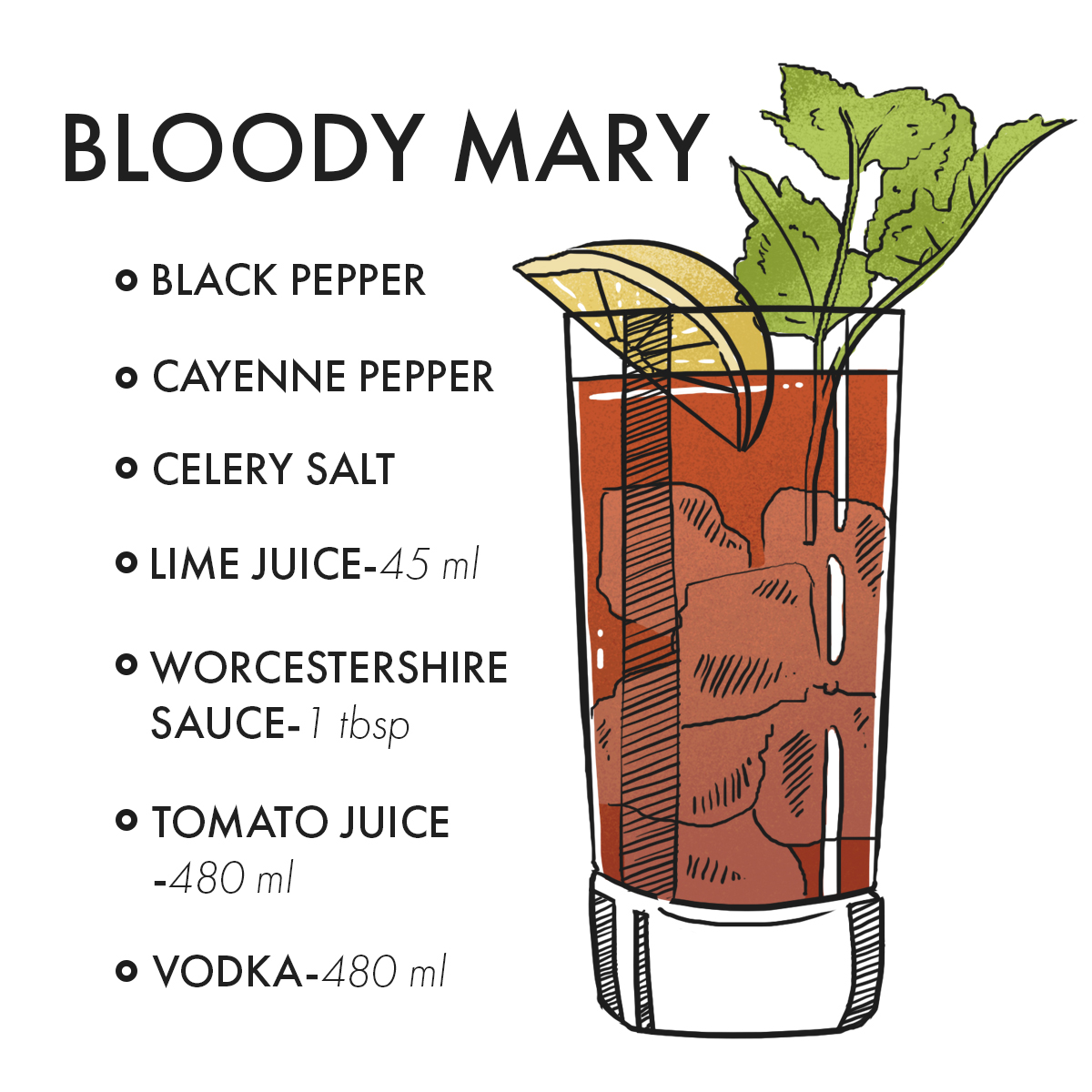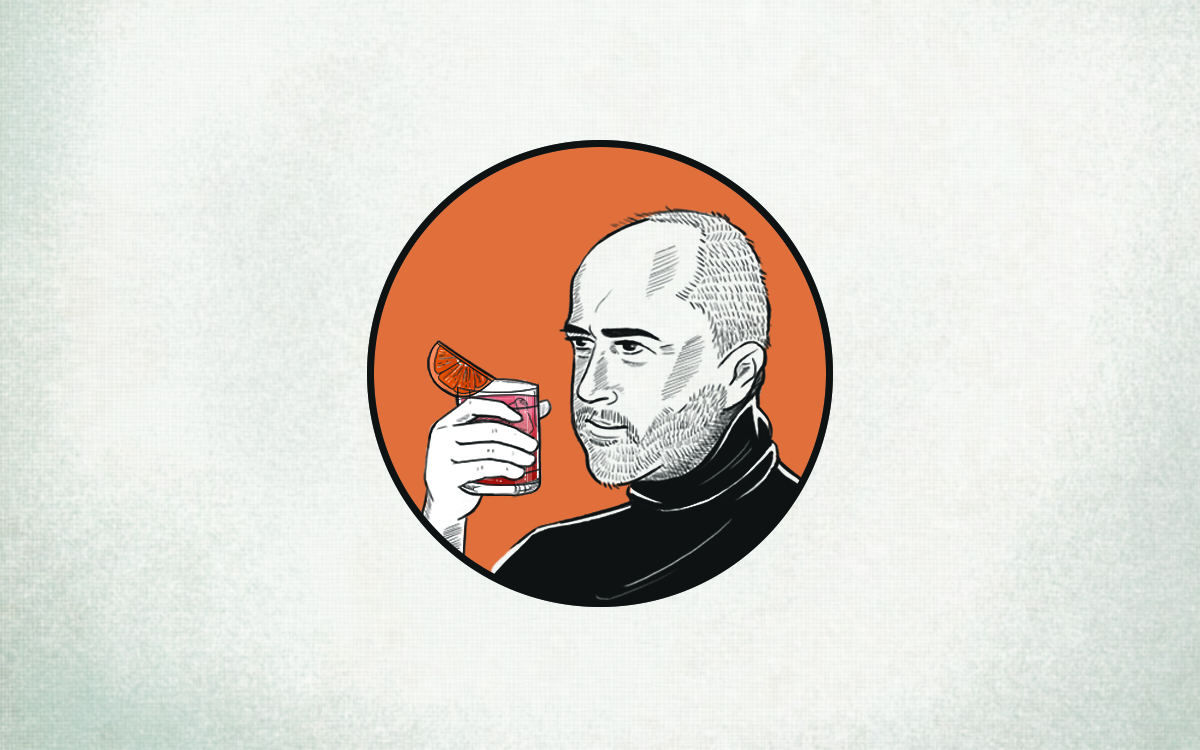As with many classic cocktails, there is some dispute over who invented the Bloody Mary. The most likely origin is Fernand “Pete” Petiot who was the bartender at Harry’s New York Bar in Paris during the 1920s.
Harry’s was originally a Bistro owned by American jockey, Tod Sloan who converted the venue by dismantling a Manhattan bar and shipping it to Paris. It opened as New York Bar in 1911, with Scotsman Harry MacElhone as barman.
The MacElhone family is still running the bar.
During the twenties, Paris was the place to be. Les années folles between 1921 and the onset of the Depression in the 1930s established Paris as the world’s cultural capital. An explosion of modernism in the arts drew people from across the globe. “Paris,” said Hemingway, “is so very beautiful that it satisfies something in you that is always hungry in America.” The American influx was also driven by low prices and access to alcohol (prohibition was from 1920 – 1933).
One influential group in Paris was the Russians who arrived in significant numbers following the war and revolution bringing with them Vodka and Caviar. The barman at Harry’s, our hero Pete Petiot, found vodka to be quite tasteless. Following his introduction to canned tomato juice by the Americans, he starting mixing combinations of the two with seasoning, and by the time we got to 1921 (the year Hemingway arrived in Paris) we have the forerunner of the Bloody Mary, known as the Bucket of Blood.
By 1933 Petiot was at the King Cole bar in New York at the behest of Vincent Astor where the drink changed its name to the more appetising Red Snapper.
In 1942 a cocktail called Red Hammer appeared in Life magazine that contained vodka, tomato juice and lemon juice. They also featured a non alcoholic version with tomato juice, Worcestershire sauce, salt and pepper.
The name, Bloody Mary, first appeared with recipes in the mid 1940s. Today many people associate the name with Queen Mary 1, known as Bloody Mary due to her treatment of Protestants in the mid-16th century. However, the strongest evidence points to US entertainer George Jessel who claimed to have named it after a friend, Mary Warburton, after spilling the drink down her white dress in 1927. Jessel also claims to have invented the drink in search of a hangover cure but his version is closer to a straight vodka and tomato juice while Petiot’s closer to the recipe we know today.
Hemingway also features as a possible inventor creating a drink that looked non alcoholic to fool his fourth wife Mary. It would be great if this story was true but the supposed date is at least 30 years after Pete Petiot’s claim and also post-dates his own claim to have introduced the drink to Hong Kong in 1941.
This recipe comes from Hemingway’s letter to Bernard Peyton in 1947 where he writes about the Hong Kong connection. The quantities here are to make a pitcher. Hemingway states in the letter “any smaller amount is worthless.”

Illustration: Jessica Bretherton
Ingredients:
- 16 oz. (approx. 470ml) vodka
- 16 oz. tomato juice
- 1 Tbsp. Worcestershire sauce
- Celery salt (to taste)
- Cayenne pepper (to taste)
- Black pepper (to taste)
- Several drops of Tobasco
- Large lump of ice
Hemingway wrote, “Keep on stirring and taste it to see how it is doing. If you get it too powerful weaken with more tomato juice. If it lacks authority add more vodka … For combating a really terrific hangover increase the amount of Worcester sauce – but don’t lose the lovely color…trick is to keep it very cold and not let the ice water it down.”
The scary thing about this recipe is the equal parts of vodka to tomato juice…
During a recent long lay-over in an airport I had seven Bloody Marys across various bars and the range of quality was remarkable and often disappointing. Variety is a risk with a recipe with a lot of ingredients with “to taste” beside them. To aid consistency there are a number of pre-made mixers on the market for those less confident in ratios, one of the most popular being McClure’s from Michigan. They also make amazing pickles and, my favourite, the Bloody Mary flavoured kettle chips.
The Bloody Mary is a great example of a cocktail “developing” rather than being “invented.” I would highly recommend experimenting with the seasoning. I prefer mine heavy on Worcestershire sauce. However, I would definitely not recommend drinking seven before a long haul flight. The tomato juice alone had consequences beyond the jet lag.
Perfect reading companion for this cocktail– Hemingway: Selected Letters 1917—1961
Want to add To Have and Have Another: A Hemingway Cocktail Companion to your collection? Purchase it here.


